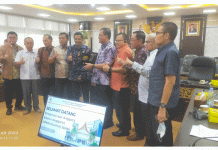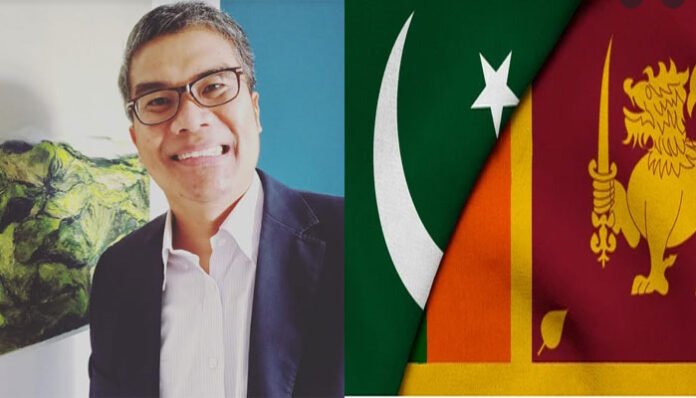
Whatever events occur in other countries or parts of the world, it is not impossible that one day it could happen in Indonesia if there are no anticipatory steps. The experiences of other nations must be a common concern for the country of Indonesia which is very dynamic in its development, which is actually quite “fragile”, but also quite “strong”.
This was conveyed by Wijayanto Samirin, Economist at Paramadina University at the Webinar “Economic Bankruptcy of Sri Lanka and Pakistan: Risks Facing Indonesia and Mitigation Efforts” which was held by the Faculty of Economics and Business at Paramadina University and moderated by Wendiyanto Saputra, Chief of CoilBISNIS, Saturday (23/04).
According to Wijayanto, the Sri Lankan crisis cannot be separated from the conditions in South Asia, which are quite unique in the world. “First of all, in a small area like Sri Lanka, 25% of the world’s population lives. Political life is very dynamic and very dominating. Second, the South Asian region is full of internal conflicts of interest and political competition between the countries of Pakistan, Bangladesh and India, which became independent in 1947. Pakistan and Bangladesh separated from India in 1971.”
In world geopolitics, the region has become a strategic point for major powers Russia, the United States (US) and China. Russia is looking for a partner country with access to warm seas, and the US is looking for a Pakistan proxy. To offset Russian influence in South Asia.
The staff of the Vice President for Economic Affairs (2104-2019) who is familiarly called Wija also revealed that China also has an interest in the success of the BRI (Belt and Road Initiative) agenda by seeking strategic partners to realize the BRI agenda through loan facilities to countries in the world, especially in the region. South Asia.
“The BRI agenda is cored to the success of China’s program to succeed in exporting Chinese products or importing raw materials needed domestically/China’s industry. The presence of China as a new actor in South Asia makes the region even more dynamic.” He explained.
Wija stated that it had an effect, so that in Pakistan there was a rivalry between the US and China, in Nepal there was competition between India and China. In Sri Lanka there is also a feud between India and China. The China/BRI projects in Sri Lanka were one of the factors that later bankrupted the Sri Lankan economy. Not the most important factor but one of the factors driving bankruptcy.
Wija emphasized that South Asia is also a supplier area for migrant workers worldwide. Largest of India and Pakistan new Bangladesh and Sri Lanka. The large number of migrant workers from South Asia is due to the limited resources of the region which must be shared among the 1.9 billion people of South Asia.
“Therefore, people are looking for new resources that are bigger and available in other parts of the world, especially developed countries and the Middle East. The large number of migrant workers has also become an important foreign exchange transfer for the countries of India, Pakistan, Bangladesh, Nepal and Sri Lanka. Interestingly, when a crisis occurs in a South Asian country, remittance transfers from migrant workers become bigger. There is a kind of solidarity from migrant workers to the countries concerned when they have economic problems.” he continued.
The pandemic conditions that hit the world resulted in a drastic decline in foreign exchange transfers that were originally quite helpful for the economic balance for South Asian countries. The disbursement of funds from abroad has stopped. This is due to the COVID-19 crisis that is happening all over the world. Solidarity assistance from migrant workers around the world to South Asia has also stalled.
“For the South Asian region, which has beautiful nature, tourism is an important acceptance factor. Especially for Sri Lanka, which has a population of 22 million and receives 2.5 million tourists per year under normal conditions. Foreign exchange from tourism suddenly plummeted due to covid 19 and when it was about to recover, there was a sudden crisis of war between Russia and Ukraine. Russians are the number one tourist in Sri Lanka. Number 3 is a citizen of Ukraine. It could be that in Russia a lot of new rich people appear, so that everywhere in the world of tourism there are Russians.” He explained.
“Sri Lanka’s economic structure and economic conditions are somewhat similar to Indonesia’s, so dissecting Sri Lanka is very important for Indonesia as a lesson.” he said.
Wija also underlined that Sri Lanka’s chaotic and chaotic image inevitably contributed to worsening the situation. Tourism, investment, bonds will also be affected by the decline. Sri Lanka’s recovery was hampered.
Wija concludes on what happened in Sri Lanka “First, a degraded democracy, there are so many anti-democratic activities carried out by Sri Lankan politicians. Second, as a result of a degraded democracy, negligent and corrupt politicians and governments emerge as a result, bad policies often emerge. Not for the interest of the people but for the interest of groups, political investors, ethnicity. Sri Lanka’s condition is like a warning for Indonesia to simply remind if there are similar things happening in Indonesia.
” Strictly speaking.
“Because of bad policies, the result is fiscal bankruptcy and the Sri Lankan people are miserable. Mainly because he no longer has enough foreign currency to pay his foreign debts, which were previously paid for, among others, by foreign exchange remittances for migrant workers and investment, tourism. Then there was a vicious cycle in Sri Lanka.” he concluded. (al)
bebi

















